The production of colostrum – or early breast milk – begins in pregnancy, and some people are able to express and save a small amount to feed their baby after birth. This is called harvesting colostrum, and here’s everything you need to know.
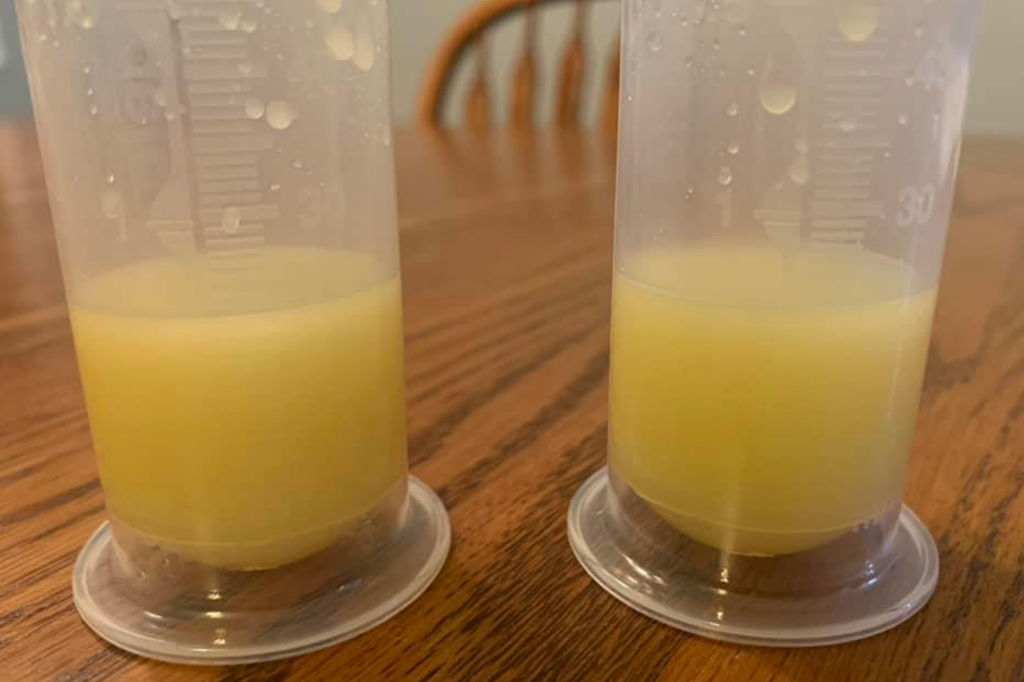
This post may contain affiliate links, which means if you click a link and purchase something, I may make a small commission at no additional cost to you. I only recommend products I love! More information here.
What is colostrum?
Colostrum is the first milk your body produces when you have a baby. It is a thick milk full of protection for newborns:
Colostrum, produced in low quantities in the first few days postpartum, is rich in immunologic components such as secretory IgA, lactoferrin, leukocytes, as well as developmental factors such as epidermal growth factor. Colostrum also contains relatively low concentrations of lactose, indicating its primary functions to be immunologic and trophic rather than nutritional.
Later, when your milk comes in, you will shift to producing transitional milk and then mature milk.
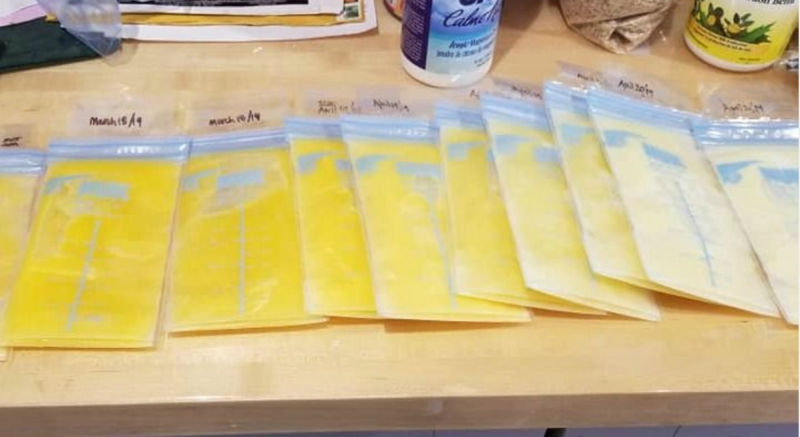
When does colostrum production start?
Production of colostrum sometimes begins weeks or months prior to delivery, and some people begin leaking during pregnancy.
Colostrum harvesting is expressing and saving this colostrum produced during pregnancy.
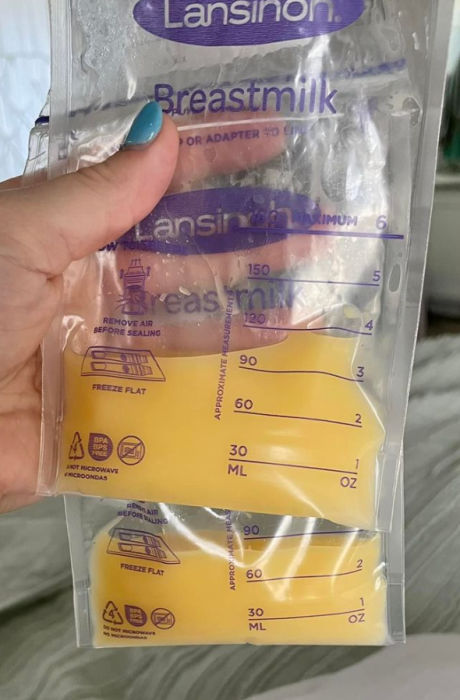
When can you harvest colostrum?
Because there are some concerns that expressing milk may trigger pre-term labor in some pregnant women, discuss harvesting colostrum with your OB or midwife and get their approval first.
Many providers will clear you around 37 weeks, but it will depend on your situation and history. You can read more about expressing milk while pregnant here.
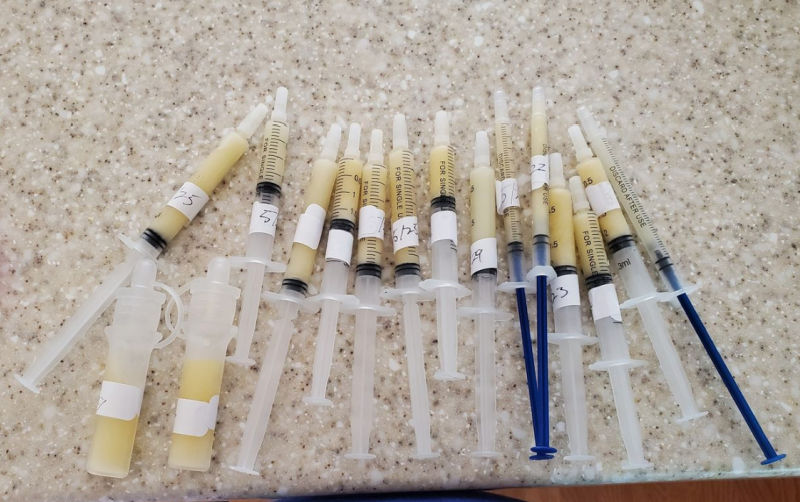
However, if you are leaking colostrum, you can “catch” the milk in a milk catcher like the Elvie Catch at any time (because that’s not providing any additional stimulation to your nipples). More on that below.
How do you harvest colostrum?
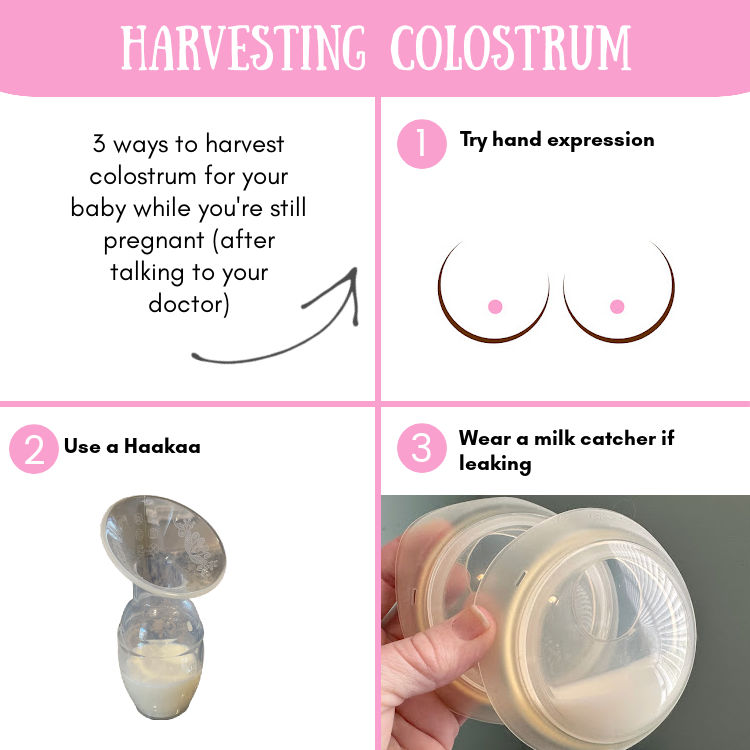
There are a few different ways that you can do this, but hand expression, using a Haakaa, or using a milk catcher are the most common.
Electric breast pumps, while great for pumping mature milk, may not be as effective for expressing colostrum.
1. Hand expression
Hand expression just means using your hands as a breast pump to remove milk. It’s a very useful skill to have, and trying it out while you’re pregnant can be a great way to practice and learn how to do it.
It can also be one of the more effective ways to harvest colostrum.
Read how to do hand expression here.
2. Haakaa
Some people find that they are able to best express colostrum using a silicone pump like a Haakaa.
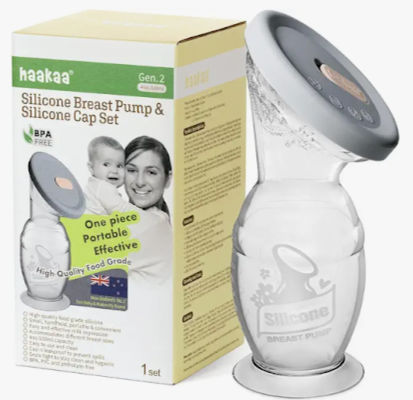
To do this, you suction the Haakaa onto your breast and let it pull the colostrum out.
More on how to use a Haakaa here.
3. Milk catcher
If you’re leaking while you’re pregnant, you may want to try wearing a milk catcher during the day to catch any colostrum you may leak.
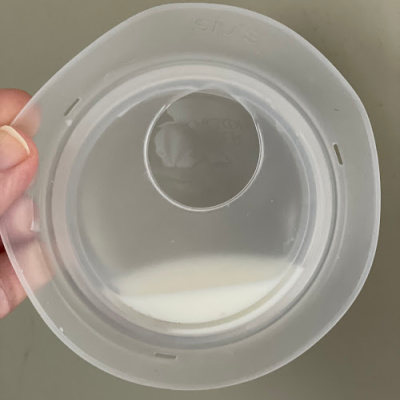
Milk catchers go in your bra and work like a breast pad in that they prevent your shirt from getting wet when you leak. But instead of that milk being thrown out with the breast pad, you can save the leaked milk and give it to your baby.
One milk catcher that I like is the Elvie Catch – you can see more of it in the stories below:
After you leak milk, store it in the refrigerator within a few hours.
Want help with exclusively pumping from birth?
How do you store colostrum?
After you express some colostrum, you’ll probably want to freeze it so that your baby can drink it when he or she is born.
Breast milk can be stored for 4 days in the refrigerator, so unless you are having a scheduled c-section or are being induced in the next day or two, it’s a good idea to freeze it to make sure you’ll be able to use it.
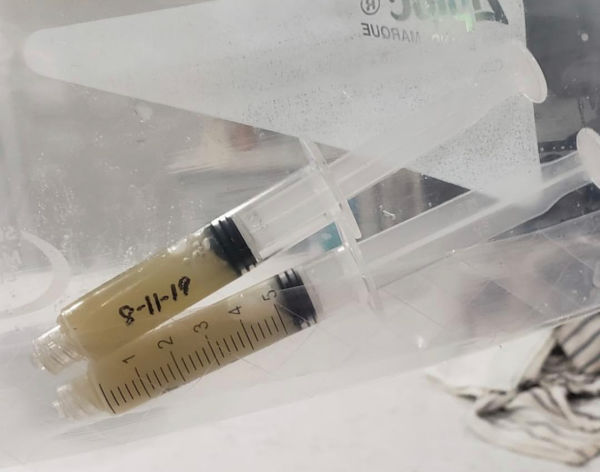
People who did this recommended storing the milk in syringes (like these) – you would basically just suck whatever you’re able to get up in the syringe.
Then, freeze the syringes in a plastic bag as shown above, leaving a little room in the syringe for the liquid to expand.
You may want to store syringes with different amounts, such as 1 ml, 3 ml, and 5 ml to avoid wasting colostrum. Once it’s warmed or baby starts drinking from the syringe, it will need to be discarded after 2 hours.
Can you bring the colostrum to the hospital?
Yes. When you’re ready to leave for the hospital or birthing center, put some of the syringes (or however you’ve stored the colostrum) in a breast milk cooler with an ice pack.
You’ll want to use the milk within 24 hours of when it finishes thawing.
If you have a lot of colostrum, you may want to call ahead and see if they can store it for you during birth and recovery. Or, if you’ll have visitors while you’re in the hospital, you can bring a small amount and ask them to bring more later.
Will doing it affect supply after baby is born?
Per Kellymom:
Pumping prior to birth will not increase milk production for your unborn child or otherwise enhance lactation after birth.
Have you tried harvesting colostrum? Give us all of your tips in the comments, or read more about getting ready for breastfeeding and pumping here.
References
- Ballard O, Morrow AL. Human milk composition: nutrients and bioactive factors. Pediatr Clin North Am. 2013;60(1):49-74. doi:10.1016/j.pcl.2012.10.002 https://www.ncbi.nlm.nih.gov/pmc/articles/PMC3586783/
- NHS UK. “Leaking from your nipples.” https://www.nhs.uk/pregnancy/related-conditions/common-symptoms/leaking-nipples/
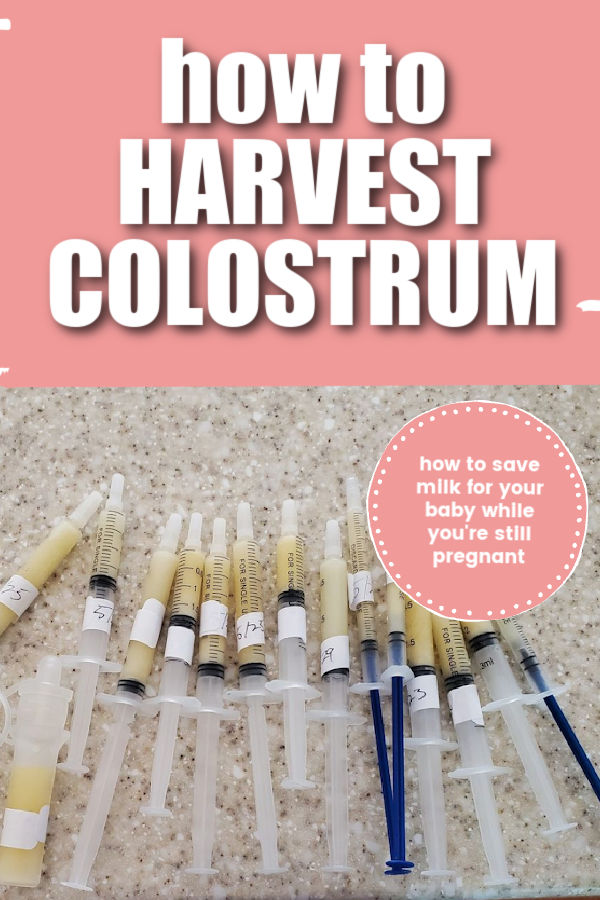
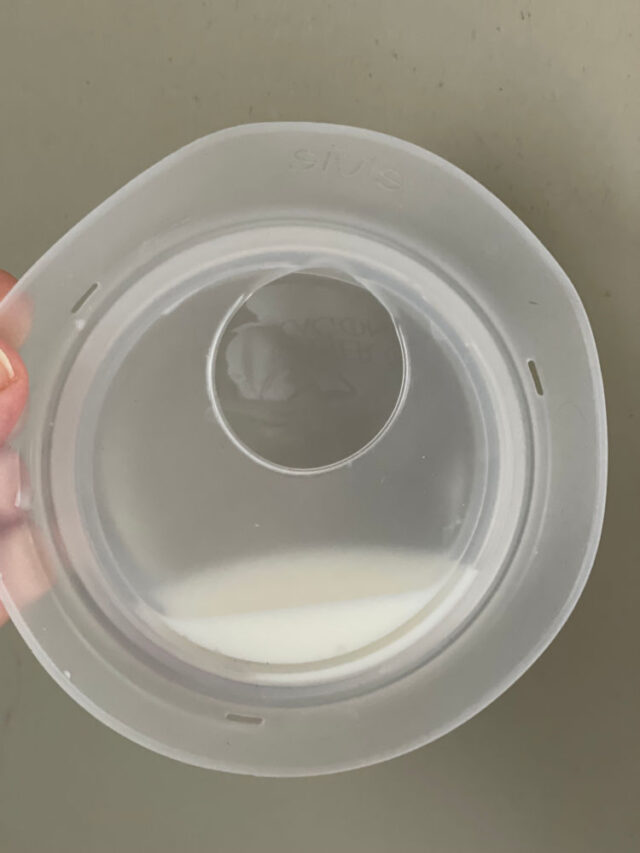

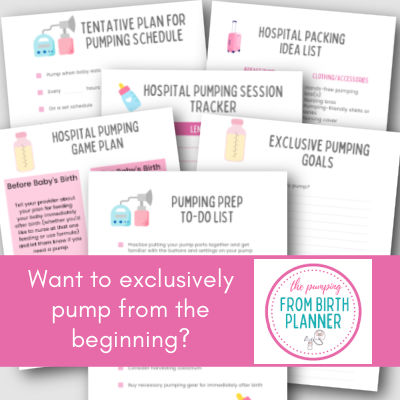
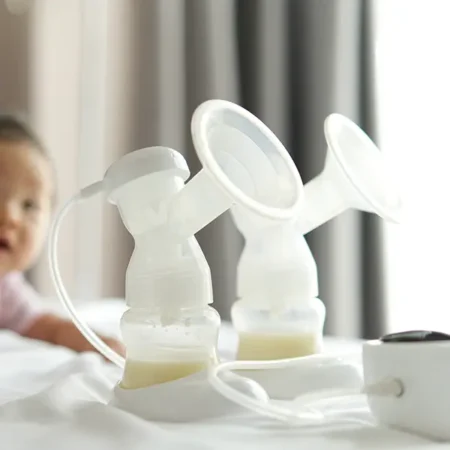






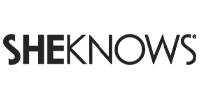
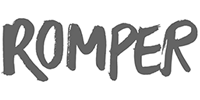




Leave A Reply!